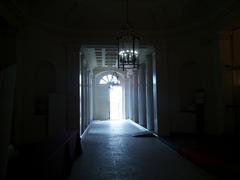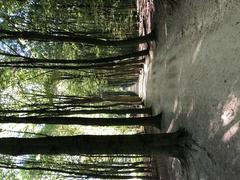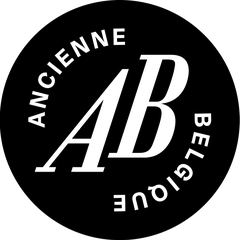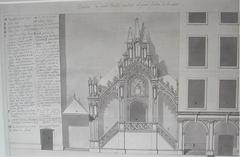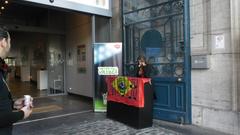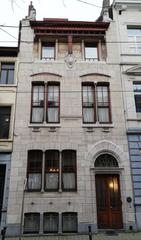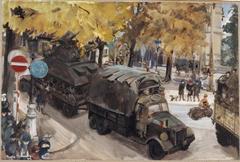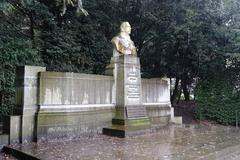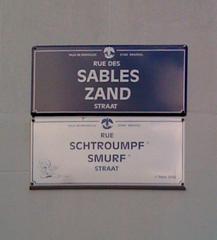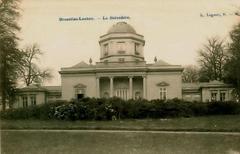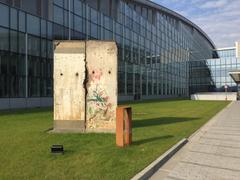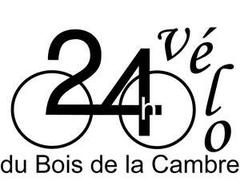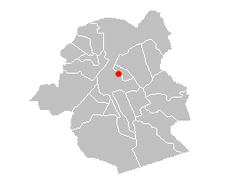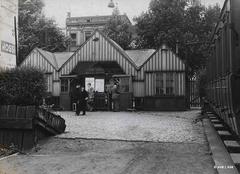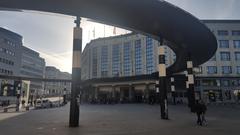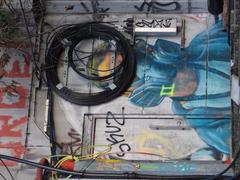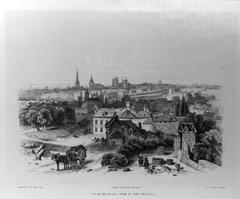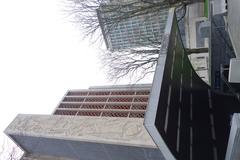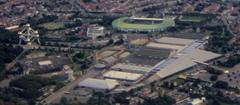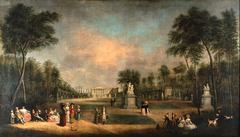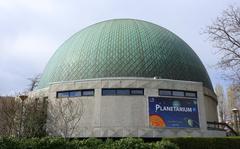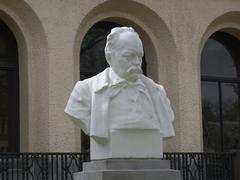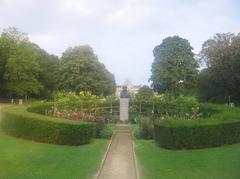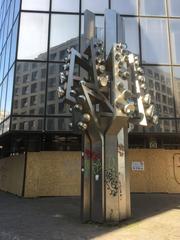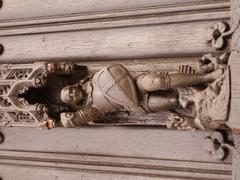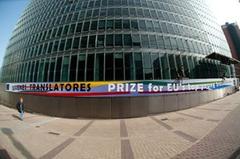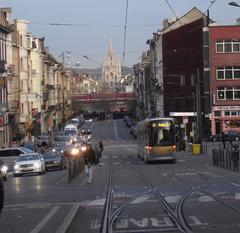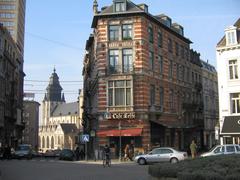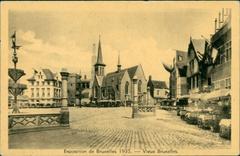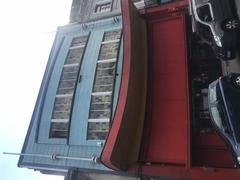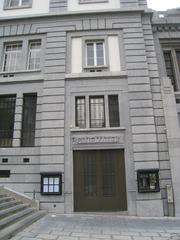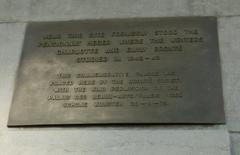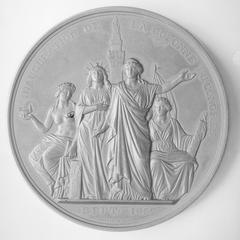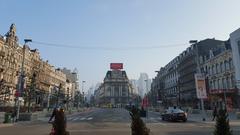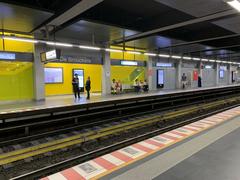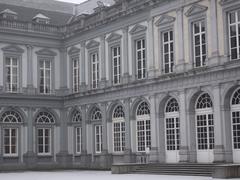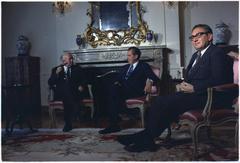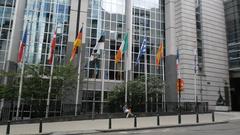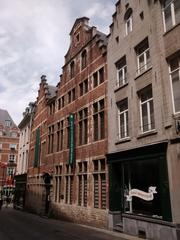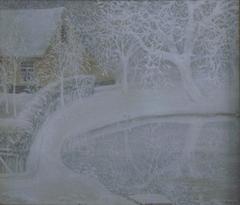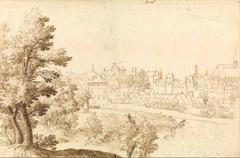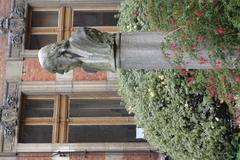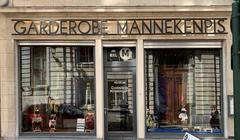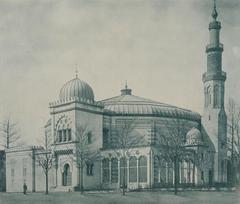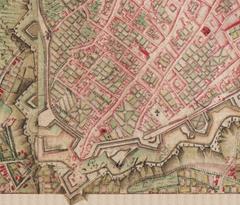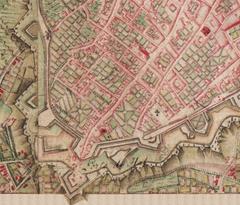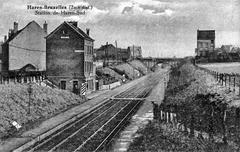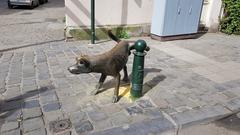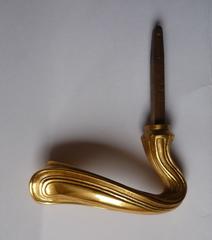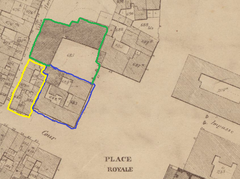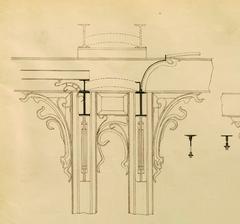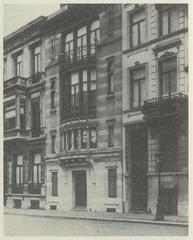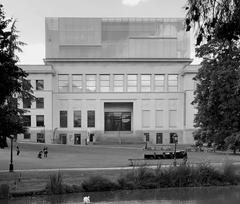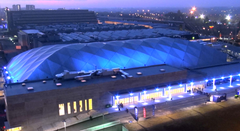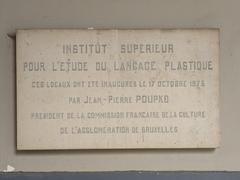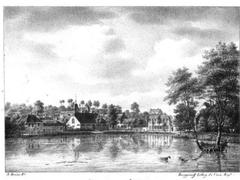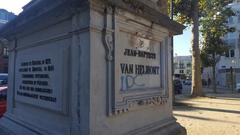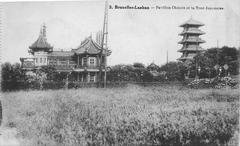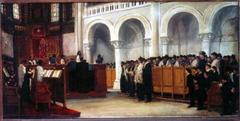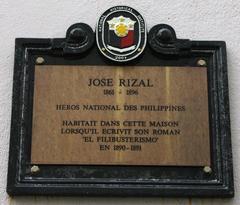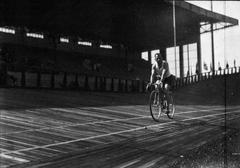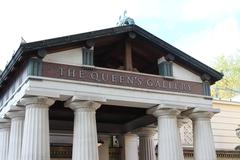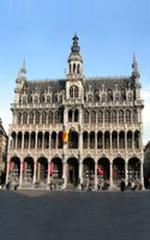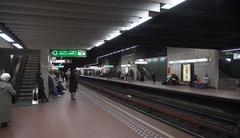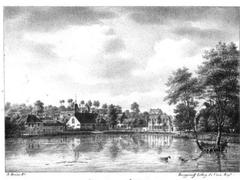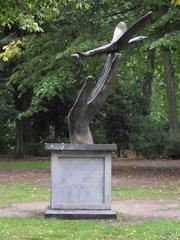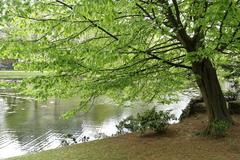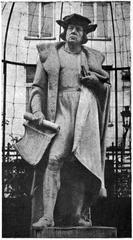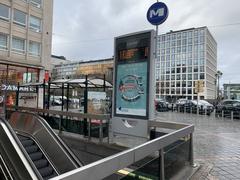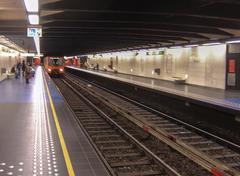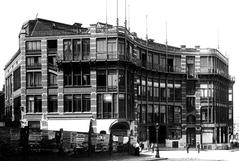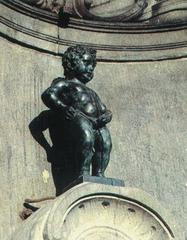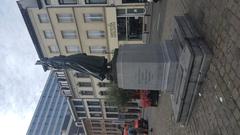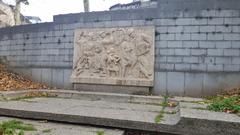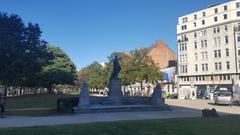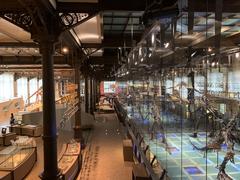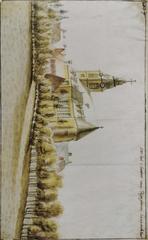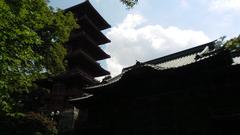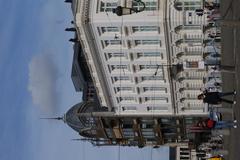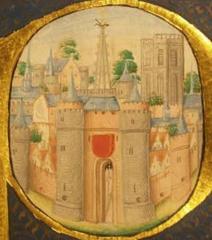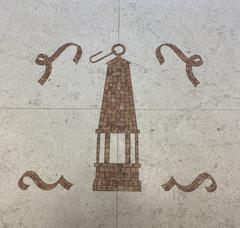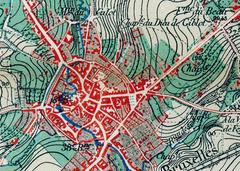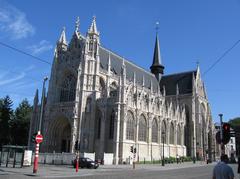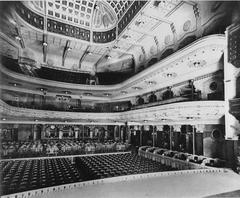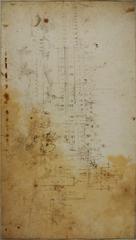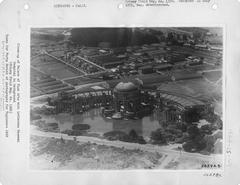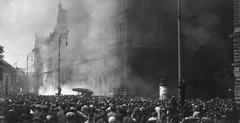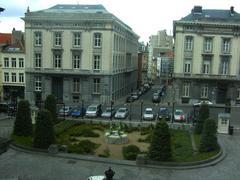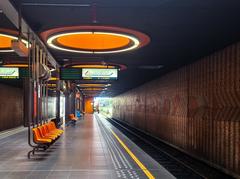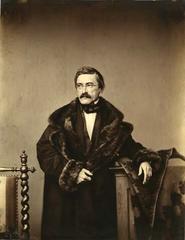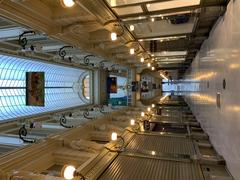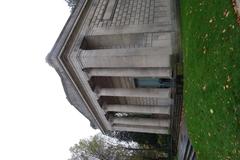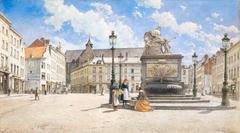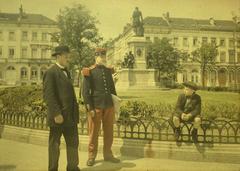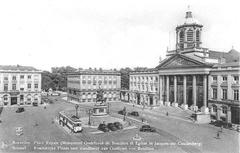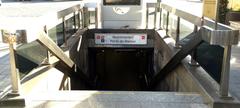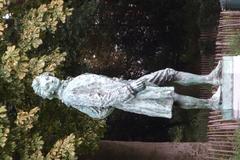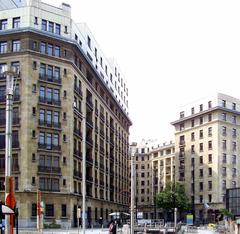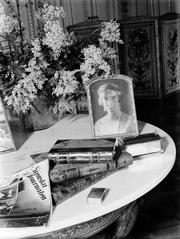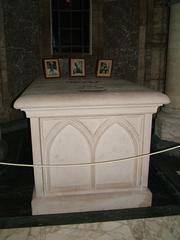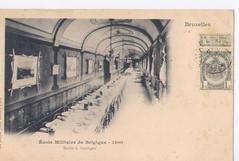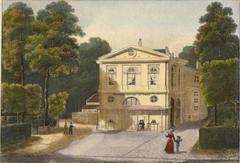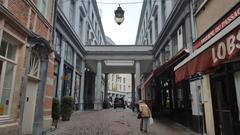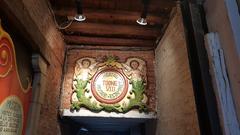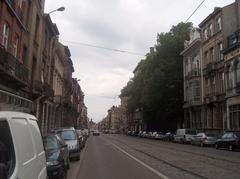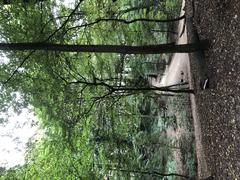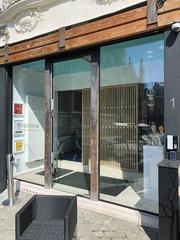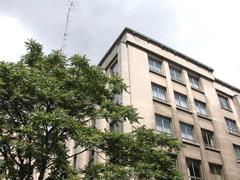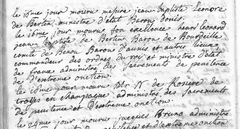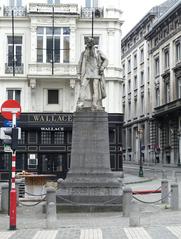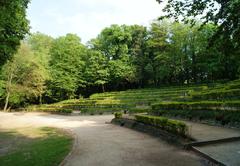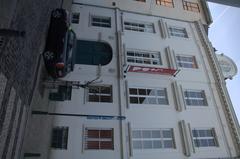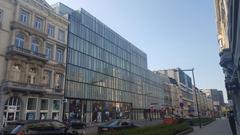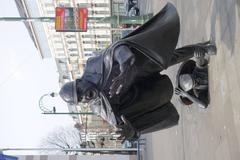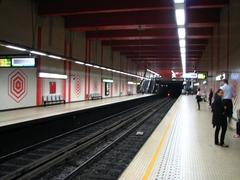Jeanneke-Pis Visiting Hours, Tickets, and Historical Significance in Brussels, Belgium
Publication Date: 18/07/2024
Introduction to Jeanneke-Pis
Jeanneke-Pis, located in the heart of Brussels, Belgium, is a modern and whimsical counterpart to the iconic Manneken-Pis. Commissioned in 1985 by local restaurateur Denis-Adrien Debouvrie and inaugurated in 1987, this statue of a young girl urinating serves as both a playful attraction and a symbol of gender equality. Unlike its more famous male counterpart, Jeanneke-Pis is a recent addition to the city’s rich tapestry of public art, reflecting contemporary values and the city’s progressive spirit. Nestled in the small alley of Impasse de la Fidélité/Getrouwheidsgang, near the bustling Delirium Café and the Grand Place, Jeanneke-Pis is a hidden gem waiting to be discovered by those who venture beyond the usual tourist paths in Brussels. For more details, visit the official Brussels tourism website.
Contents Overview
- Introduction
- History and Significance
- Origins and Creation
- Symbolism and Cultural Impact
- Visitor Information
- Location and Accessibility
- Visiting Hours and Tickets
- Travel Tips
- Public Reception and Controversies
- Preservation and Maintenance
- Connection to Local Traditions
- Visitor Experience
- Impact on Local Economy
- Comparative Analysis with Manneken-Pis
- Future Prospects
- Frequently Asked Questions
- Conclusion
Discover Jeanneke-Pis - History, Significance, and Visitor Information in Brussels
Introduction
Jeanneke-Pis, a hidden gem in the historic city of Brussels, is more than just a whimsical statue. This modern counterpart to the famous Manneken-Pis offers a unique glimpse into the city’s cultural heritage and progressive values. In this article, we will explore the history, significance, and visitor information for Jeanneke-Pis, making it a must-visit on your next trip to Brussels.
History and Significance
Origins and Creation
Jeanneke-Pis, a lesser-known but equally charming counterpart to the famous Manneken-Pis, is a modern addition to Brussels’ rich tapestry of public art. The statue was commissioned in 1985 by Denis-Adrien Debouvrie, a local restaurateur, as a means to draw attention to the Ilot Sacré area, a historic quarter in the heart of Brussels. The statue was sculpted by Debouvrie himself and was officially inaugurated in 1987. Unlike the centuries-old Manneken-Pis, Jeanneke-Pis is a relatively recent creation, yet it has quickly become a beloved symbol of the city.
Symbolism and Cultural Impact
Jeanneke-Pis represents a playful and egalitarian spirit, embodying the same irreverent humor that characterizes its male counterpart. The statue depicts a young girl with pigtails, squatting and urinating, a pose that mirrors the Manneken-Pis. This gender-balanced representation is significant in a city that prides itself on its progressive values and cultural inclusivity. The statue is often seen as a feminist statement, challenging traditional gender norms and celebrating the natural human form.
Visitor Information
Location and Accessibility
Jeanneke-Pis is located in a small alley called Impasse de la Fidélité/Getrouwheidsgang, just a short walk from the Grand Place, one of Brussels’ most famous landmarks. The statue is somewhat hidden, adding an element of discovery for those who seek it out. This location was chosen deliberately to draw visitors into the lesser-known parts of the city, thereby promoting local businesses and enriching the tourist experience.
Visiting Hours and Tickets
Jeanneke-Pis is accessible year-round and does not require an entry fee, making it an attractive option for budget-conscious travelers. The statue is open for viewing 24/7, allowing visitors the flexibility to include it in their sightseeing plans at any time.
Travel Tips
- Best Time to Visit: Early mornings or late evenings are ideal to avoid crowds.
- Nearby Attractions: Combine your visit with a trip to the Grand Place, Brussels City Museum, and the Royal Gallery of Saint Hubert.
- Photography Spots: The narrow alley can be challenging for photos, so consider using a wide-angle lens for better shots.
Public Reception and Controversies
Since its installation, Jeanneke-Pis has garnered mixed reactions. While many appreciate its whimsical nature and the balance it brings to the city’s public art, others have criticized it as a mere tourist gimmick. Despite these differing opinions, the statue has undeniably become an integral part of Brussels’ cultural landscape. It has also sparked discussions about public art and its role in urban spaces, making it a subject of academic interest and public debate.
Preservation and Maintenance
Jeanneke-Pis is protected by a wrought iron fence, a measure taken to prevent vandalism and ensure its preservation. The statue is maintained by the city of Brussels, which undertakes regular cleaning and restoration work as needed. This commitment to preservation underscores the statue’s importance as a cultural and historical artifact.
Connection to Local Traditions
Jeanneke-Pis is often included in local festivals and celebrations, further cementing its place in the cultural fabric of Brussels. For instance, during the Ommegang Festival, a historical reenactment that takes place every summer, Jeanneke-Pis is adorned with traditional costumes, much like the Manneken-Pis. This practice not only highlights the statue’s cultural significance but also engages the community in preserving and celebrating their heritage.
Visitor Experience
For tourists, visiting Jeanneke-Pis offers a unique and memorable experience. The statue is accessible year-round and is free to visit, making it an attractive option for budget-conscious travelers. Its location near the Grand Place means that visitors can easily incorporate it into a day of sightseeing. Additionally, the surrounding area is home to numerous cafes, restaurants, and shops, providing ample opportunities for visitors to immerse themselves in the local culture.
Impact on Local Economy
The presence of Jeanneke-Pis has had a positive impact on the local economy. By drawing tourists to the Ilot Sacré area, the statue has helped boost business for local vendors and establishments. This economic benefit extends beyond immediate revenue, as increased foot traffic encourages further investment in the area, leading to urban renewal and development.
Comparative Analysis with Manneken-Pis
While Jeanneke-Pis and Manneken-Pis share thematic similarities, they serve different roles within the city’s cultural landscape. Manneken-Pis, with its long history dating back to the 17th century, is deeply rooted in Brussels’ traditions and folklore. In contrast, Jeanneke-Pis represents a modern, forward-thinking approach to public art. This juxtaposition highlights the city’s ability to honor its past while embracing contemporary values.
Future Prospects
Looking ahead, Jeanneke-Pis is poised to remain a significant cultural landmark in Brussels. As discussions about gender equality and public art continue to evolve, the statue’s relevance is likely to grow. Future initiatives may include educational programs, guided tours, and interactive exhibits that explore the statue’s history and significance in greater depth.
Frequently Asked Questions
Q: What are the visiting hours for Jeanneke-Pis?
A: Jeanneke-Pis is accessible 24/7, making it convenient for visitors at any time.
Q: Is there an entry fee to visit Jeanneke-Pis?
A: No, visiting Jeanneke-Pis is free of charge.
Q: Where is Jeanneke-Pis located?
A: Jeanneke-Pis is located in the alley Impasse de la Fidélité/Getrouwheidsgang, near the Grand Place in Brussels.
Q: Are there any special events related to Jeanneke-Pis?
A: Yes, Jeanneke-Pis is often dressed in traditional costumes during local festivals like the Ommegang Festival.
Q: What are some nearby attractions to Jeanneke-Pis?
A: Nearby attractions include the Grand Place, Brussels City Museum, and the Royal Gallery of Saint Hubert.
Conclusion
In conclusion, Jeanneke-Pis is more than just a quirky tourist attraction; it is a symbol of Brussels’ rich cultural heritage and progressive values. Its history, significance, and impact on the local community make it a must-visit for anyone seeking to understand the city’s unique character. For more information, you can visit the official Brussels tourism website.
Call to Action
Don’t miss out on exploring more hidden gems in Brussels! Download the Audiala app, check out related posts, or follow us on social media for the latest updates and travel tips.
Sources and Further Reading
- Discover Jeanneke-Pis - History, Significance, and Visitor Information in Brussels, 2024, Visit Brussels https://www.visit.brussels/en
- Jeanneke-Pis, Brussels - Visiting Hours, Tips, and Nearby Attractions, 2024, Visit Brussels https://www.visit.brussels/en
- Exploring Jeanneke-Pis in Brussels - Visiting Hours, Tickets, and Nearby Attractions, 2024, Visit Brussels https://www.visit.brussels/en

